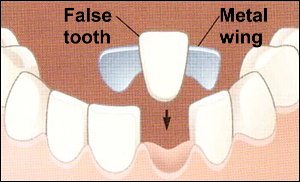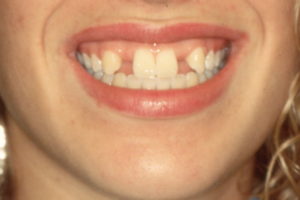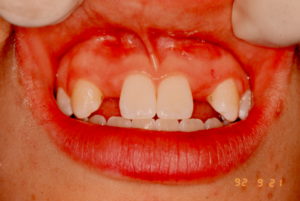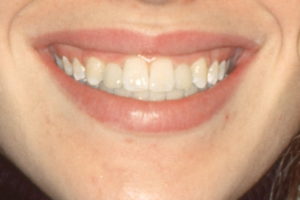Though it is valuable, Maryland bridge has some problems in regard to the use of metal and the longevity of the bridge bonding.
- It is used only when one tooth is missing
- The teeth are translucent. The metal backing will cause the teeth to darken slightly, so the result is a slghtely different color than other front teeth. To overcome this problem we design the framework to fit at the palatal portion of the tooth.
- The false tooth is a porcelain fused to metal. This will make it lack the natural translucency and vitality that other teeth have in them. The use of zirconia that mimics the colour of natural teeth resolves this and the above problems.
- There is a tendency of the wings to debond, depending on the chewing forces applied on the bridge. Therefore the bridge has to be recemented every few years.
- Several studies indicate that anterior bridges tend to have a better performance than posterior bridges.
In conclusion: The Maryland bridge has been successful and is used in dentistry for more than 30 years. The quality and design of the bridge have been proven successful both as a transitional and permanent prosthesis. It can last more than ten years if one takes relevant care of it and mantains a good hygiene regime.











